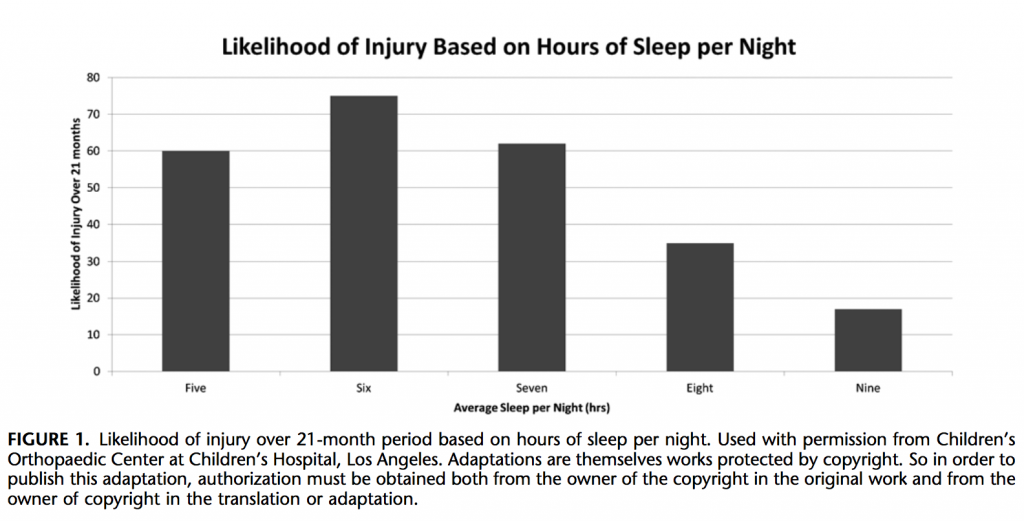SLEEP LINK:
Healthy sleep is a vital element in reducing the risk of sports injuries in teenagers. Adolescent athletes who slept eight or more hours each night were 68 percent less likely to be injured than athletes who regularly slept less. Studies show that young athletes who get optimal sleep time (8-10 hours/night) will improve their performance, help protect them against sports injuries, and improve their recovery and healing if they do sustain an injury.
KEY ARTICLES:
Many athletes would benefit from obtaining the proper amount of sleep each night. This study assessed the effect of restricted sleep and related symptoms on neurocognitive performance. Athletes who are sleep deprived (< 5 hours) performed worse on computerized neurocognitive testing (ImPACT) than those who slept more. As a result of this sleep deprivation, these teenagers have worse verbal memory, visual memory, visual motor speed, and reaction times. This was the take-home message from a study involving 7,150 athletes (31.3% female) age 14-17 years old.
The average sleep duration of these athletes was 7.8 hours a night which is less sleep than the recommended 8-10 hours of sleep for this age group. These findings are consistent with national data. According to the CDC, more than 1/3rd of adults in this country do not obtain the recommended amount of sleep compared to 2/3rd of teenagers. This age group is suffering from the effects of sleep loss, which is why the CDC has called this situation in our teenage population a public health issue. Males obtained more sleep than females, which is also consistent with other study findings.
This study reveals the association between insufficient sleep and sports injuries. The strongest predictors of sports injuries in adolescents are insufficient sleep and higher age/grade. The research showed that 65% of those students getting less than 8 hours of sleep at night had injuries. This is a 1.7 times greater risk of injury than those teenagers getting more than 8 hours of sleep. Even more striking is the data in Figure 1 (below) showing 4x more injuries in players reporting 6 hours of sleep per night compared to those getting 9 hours of sleep… ouch!
Many believe high-level athletes are immune to the effects of sleep loss as they seemingly perform well. However, while their achievements may be superior to others, there is evidence they are not performing at their peak. This study used actigraphy (a fancy, more accurate FitBit) to evaluate the weekday and weekend sleep patterns of high-level adolescent athletes. Reaction times on Monday, after students were well rested over the weekend were faster than on Thursday or Friday, when students were in a state of sleep debt.
When the Basic Combat Training (BCT) schedule at Fort Leonard Wood in Missouri was shifted later for new US Army recruits for this quasi-experimental study, this group obtained 31 more minutes of sleep each night. This translated into improved marksmanship and this group also reported less mood disturbance. The latter finding has been a common theme in two decades’ worth of research on the effect of adopting a schedule that is more in-line with the biologic sleep need of the adolescent.

